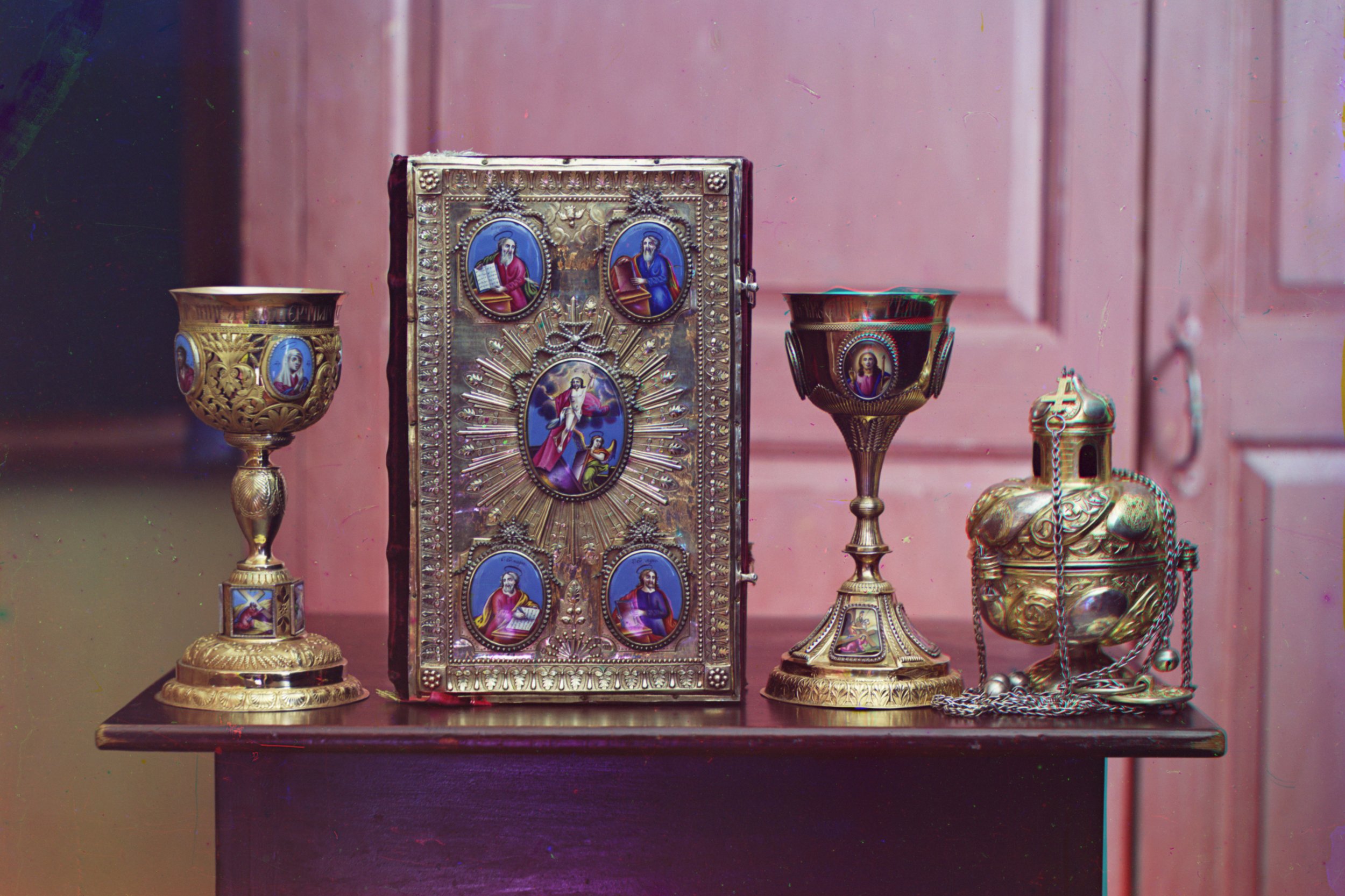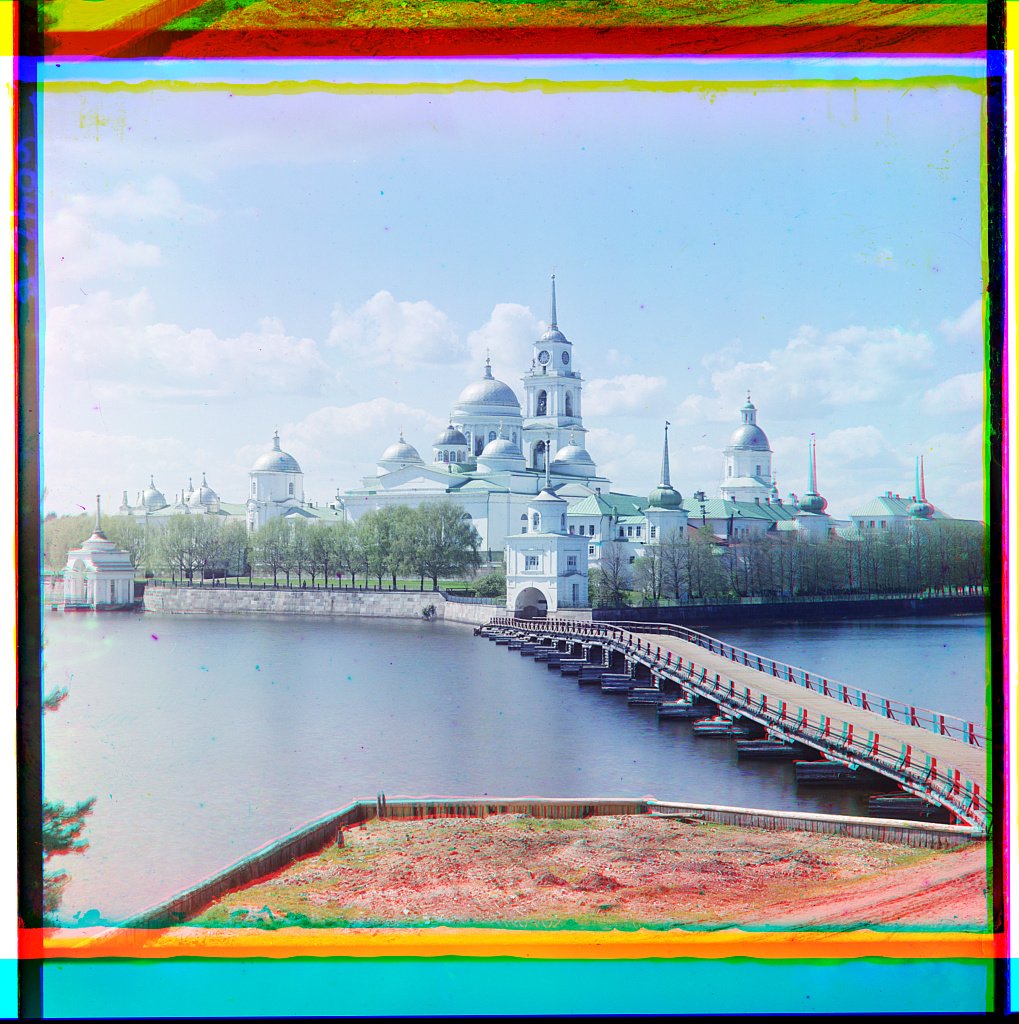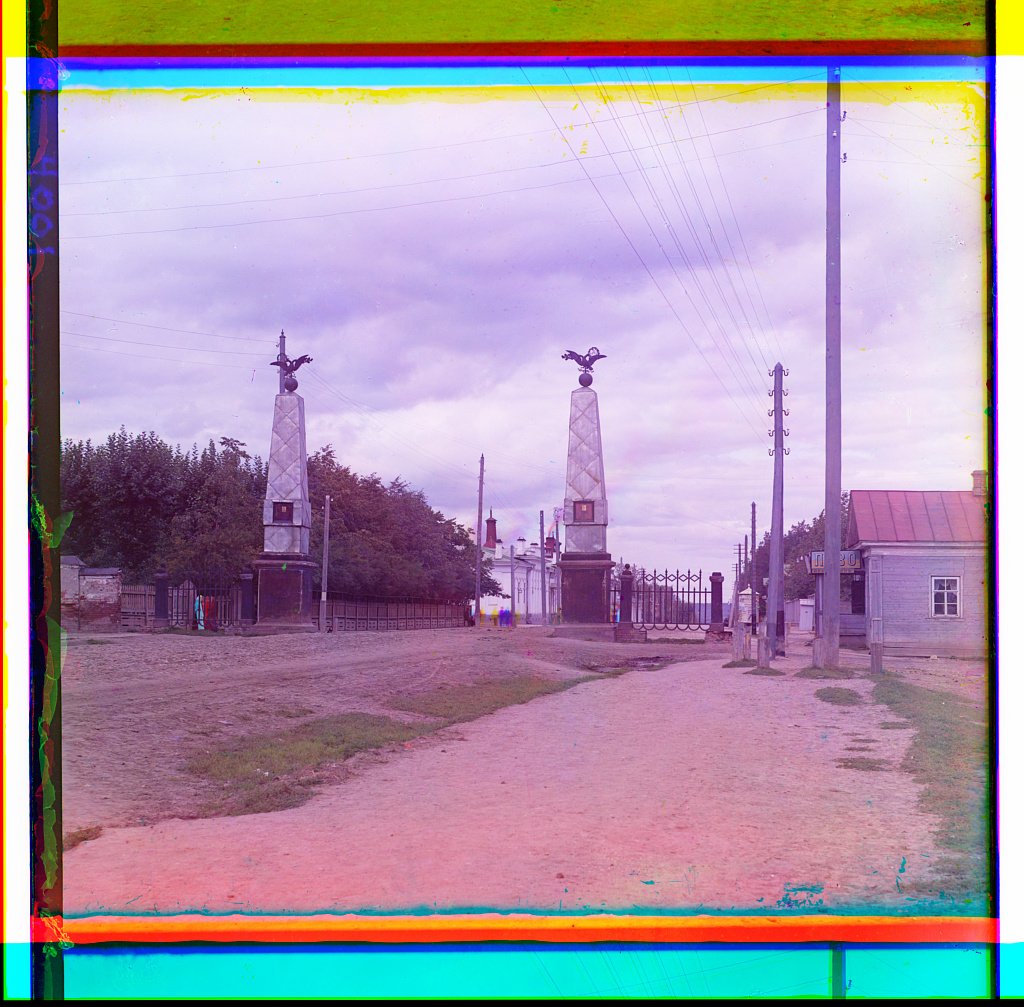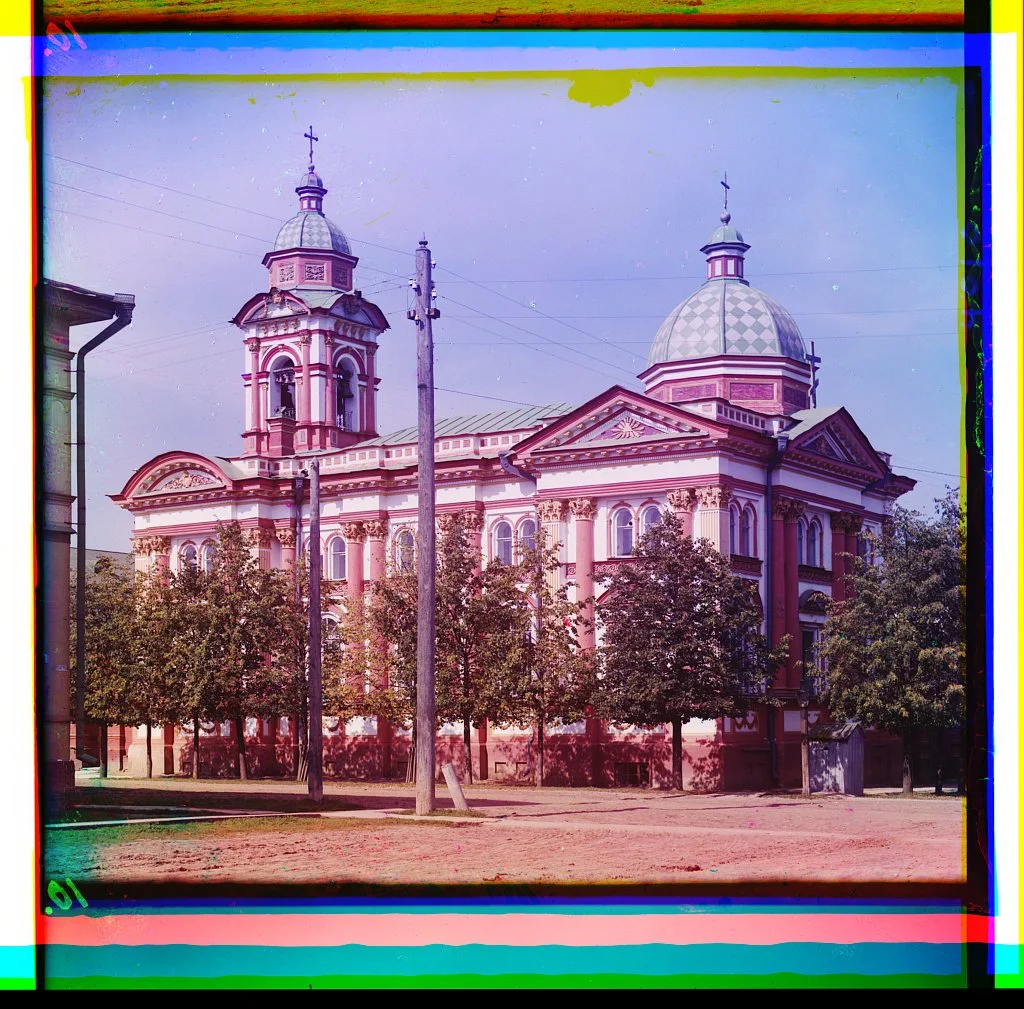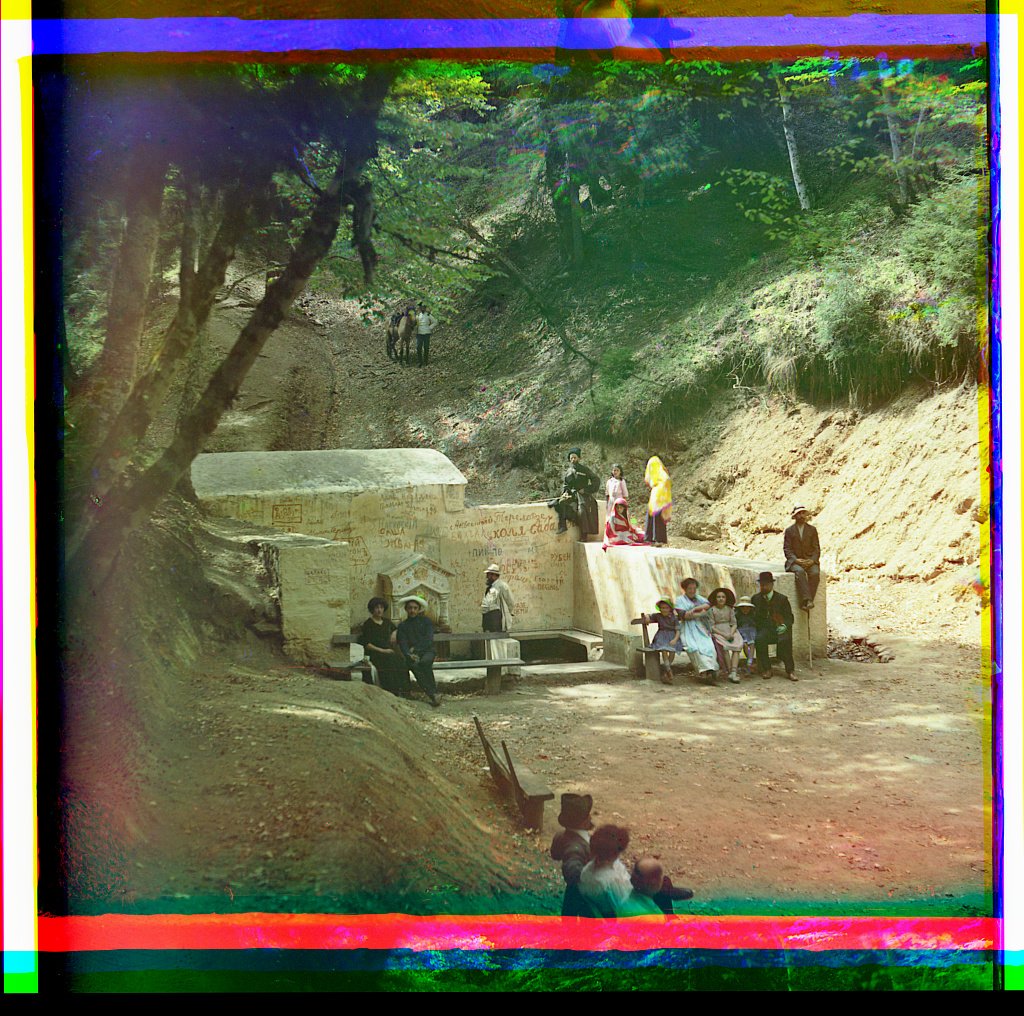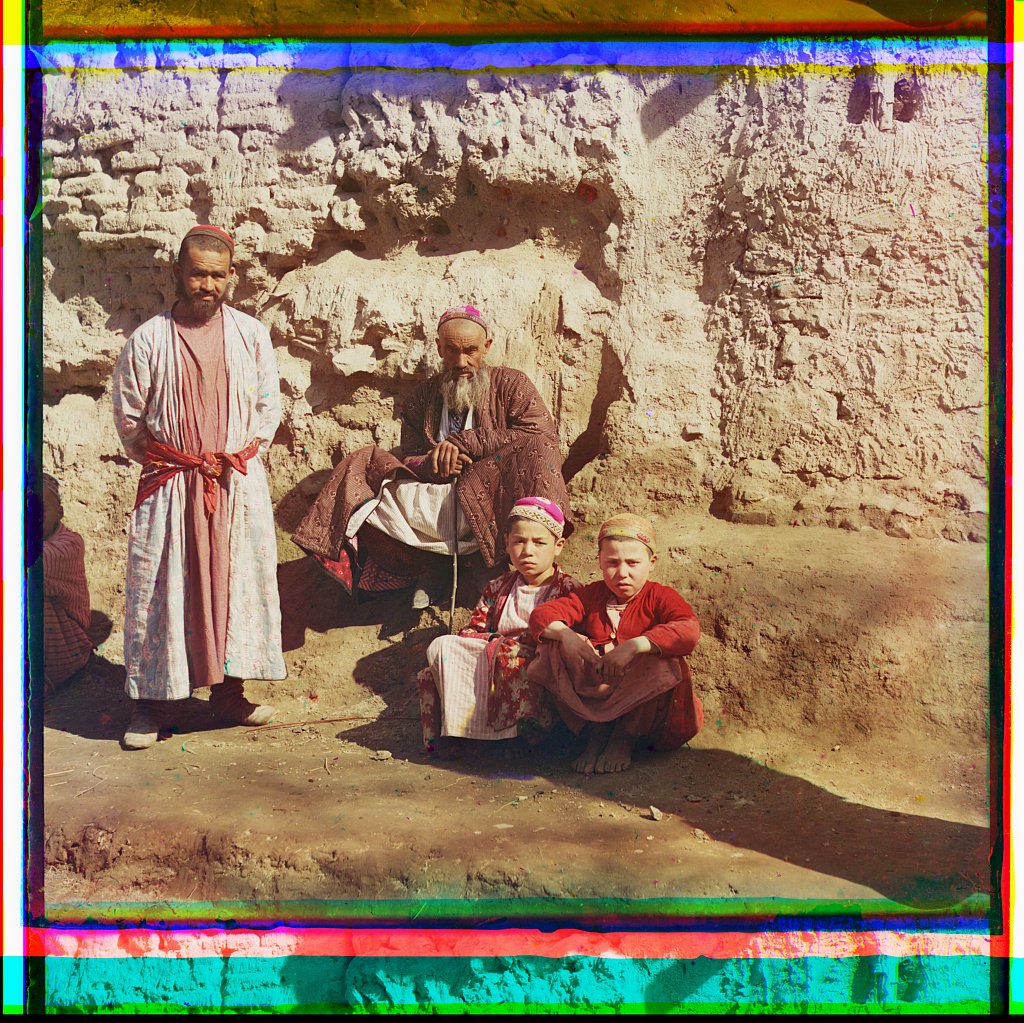Sergey Prokudin-Gorsky: Photographing Pre-revolutionary Russia in Colour
Pre-revolutionary Perm in c.a. 1910
When teaching the Foundation students photography at the British Higher School of Art & Design in Moscow, I started the course by showing them a photograph by Sergey Prokudin-Gorsky of Perm, which is an industrial city located in the Ural Mountains. The students were then asked when did they think the photograph was taken? Confused … they looked at the photograph and it’s colourful depiction of a cityscape in a somewhat rural setting, complete with wooden dachas, a cemetery and church spires! Some answered that the photo had been taken relatively recently; an understandable answer given that most of the student’s families have dachas which even nowadays do not look too dissimilar! Some would guess older, but usually never did a student give the correct answer!
I would then revealed that the photo was taken in 1910, in pre-revolutionary Russia. At this point jaws would drop! This is because whenever we think about pre-revolutionary Russia (or anywhere really), we usually refer to the black and white images which frequent history books. Our minds are simply not used to seeing so many colour photographs documenting this era, as if taken with a modern digital camera or colour photographic film. And the trick with Prokudin-Gorsky’s photographs played on my students is that in many cases little has changed, except for the abundance of cars and satellite dishes attached to today’s dachas! Now revealed to the students, these subtle differences became more apparent, even obvious! This trick however only worked because Russia is a country of extremes, part modern and highly developed, but you only have to travel into the deep countryside to discover a different world.
Bridge over the Kama river near Perm, c.a. 1910
Sergey Prokudin-Gorsky (August 30, 1863 – September 27, 1944)
Sergey Prokudin-Gorsky did not invent colour photography, in fact many photographers and pioneers had experimented with and developed colour photographic processes in the several decades before he documented Imperial Russia. The colour process which Sergey Prokudin-Gorsky used was pioneered by James Clerk Maxwell and photographer Thomas Sutton in 1861, whereby three black and white photographs were taken using colour filters and then projected together using colour filters to recreate a colour rendition of the scene. Whilst not a true colour process — unlike the colour photographic films introduced in the first half of the Twentieth Century — it was a usable process which could recreate colours scenes with reasonable accuracy. But whilst usable, it was by no means practical, or quick, because the process involved taking and presenting multiple photographs. And whilst by no means the father of the process, Sergey Prokudin-Gorsky was certainly its master, perfecting the technique and using it to produce one of the most unique historical collections of photographs ever produced!
Born during the Nineteenth Century at the height of the Russian Empire to a noble Russian family, Sergey Prokudin-Gorsky was witness during his lifetime the massive changes and upheaval which happened in his country as Russia morphed from an imperial empire under tsarist rule into the central part of the Soviet Union! And it is this context — and the fact that he managed to document in colour a world we think of in black and white — that he managed to produce something utterly unique.
Still life with some of the Tsar's gifts
At the beginning of the Twentieth Century Sergey Prokudin-Gorsky established a photographic studio and laboratory in Saint Petersburg, and travelled to Germany where he studied three-part colour photographic processes with German photochemistry Professor Adolf Miethe. Sergey Prokudin-Gorsky’s following work in the field of early colour photography earned him praise throughout Russia and across Europe.
During this period Sergey Prokudin-Gorsky produced one of his most famous photographs, a portrait of Leo Tolstoy sitting on a bench in Yasnaya Polyana. Impressed with his work and demonstrations of the ‘colour photographic process’, Tsar Nicholas II commissioned Sergey Prokudin-Gorsky to document Russia in colour. And over the next few years, until after the October Revolution, he traveled the country documenting its scenes and people, producing over ten thousand images.
The old ferryman at Chernigov who reminds me of Anton Chekhov’s The Night Before Easter
Exploring Prokudin-Gorsky’s Collection
The collection of images produced by Sergey Prokudin-Gorsky is interesting not just because they document Imperial Russia, but because they depict an only semi-industrialised and often rural world. Russia’s industrial revolution was slower and happened over a longer period of time than those of Western European powers, in-part because of the attitudes of business owners towards industrialisation and the extensive use of manual labour. So the world depicted in Sergey Prokudin-Gorsky work is alien in several senses, being from a time and from a country which no longer exist! Of particular note are the photos he took of peasants and farm workers in rural settings.
The majority of Sergey Prokudin-Gorsky prints have been restored and are freely available online through the U.S. Library of Congress. One can spend hours trawling through this archive and it’s strange depictions of a world, part rural and part industrialised. Many of the photographs are taken near the railroads, these being so important to Russia’s development as an industrialised country. The mixture is strange, as there are traditional looking kremlins and churches, intermixed with warehouses, railroads and factories. The people captured by Sergey Prokudin-Gorsky are also strange, often very poor — but well dressed in their traditional clothing — they almost don’t fit into the world around them! A particular favourite is the supervisor of the floodgates in Pinchas Karlinskiy because it reminds me of Anton Chekhov’s The Night Before Easter (Selected Stories) where the protagonist is standing on the banks of the Goltva river (now in modern day Ukraine) waiting for the ferryboat.
You can explore Sergey Prokudin-Gorsky work in the U.S. Library of Congress’ online collection!




